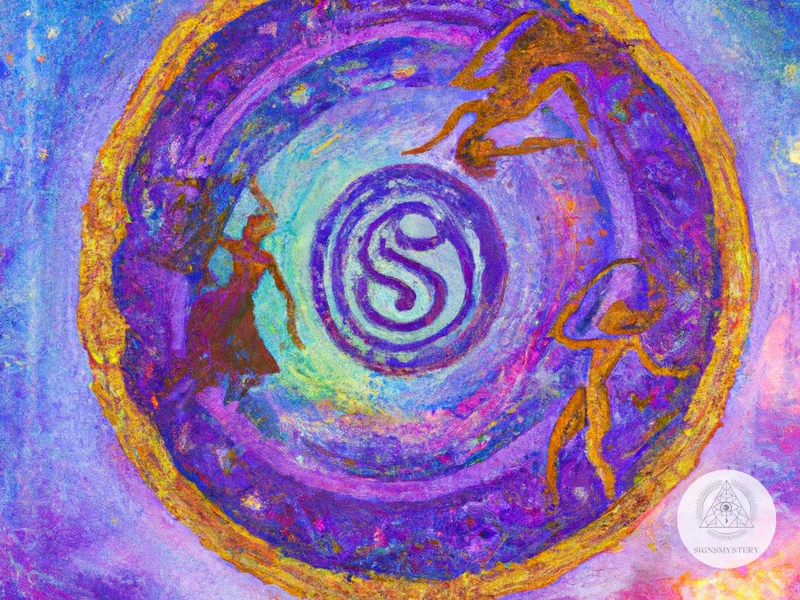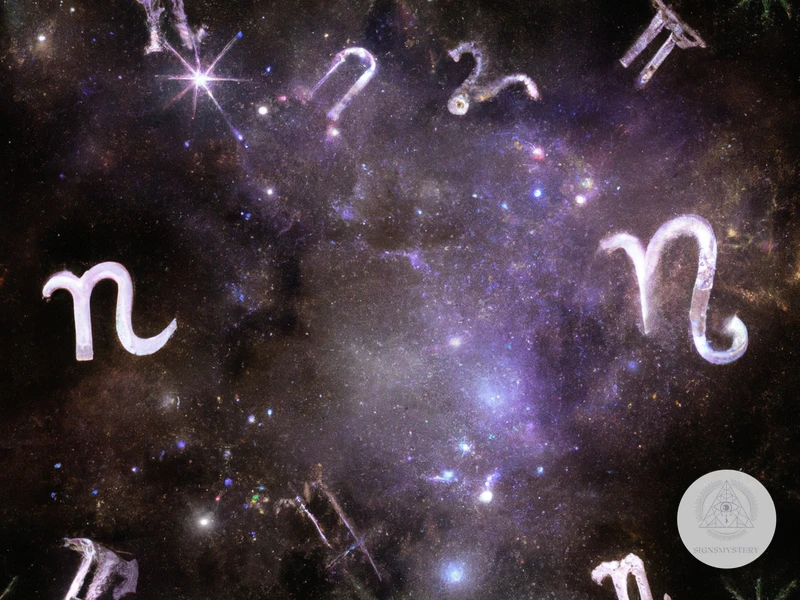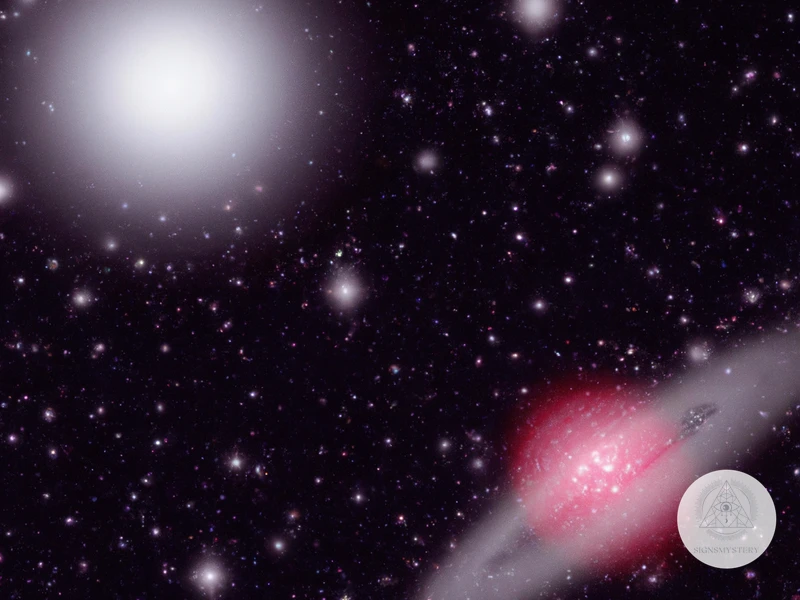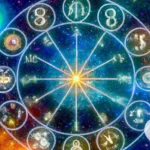Astrology has always captivated human curiosity, offering insights into the cosmic forces that shape our lives. Central to this ancient practice are the planetary symbols, which have been used for centuries to represent celestial bodies and their influences on individuals. Exploring the origins of these symbols unveils a rich tapestry of cultural and historical developments, from early Babylonian astrology to the Renaissance revival. These symbols have evolved over time, gaining new interpretations and variations in modern astrology. Understanding the meanings behind these planetary symbols is key to unlocking the intricate complexities of astrological readings. Join us on a journey through time as we delve into the origins and interpretations of planetary symbols in astrology.
Ancient Origins of Planetary Symbols

The ancient origins of planetary symbols in astrology are deeply rooted in the cultural and historical developments of civilizations. These symbols have evolved over time, gaining new interpretations and variations in modern astrology. Let’s explore the journey of these symbols through different eras:
1. Early Babylonian Astrology: The Babylonians were among the first to develop a system of astrology, attributing specific symbols to represent the planets. They believed that these celestial bodies had a profound impact on human affairs. The symbols used during this time were simple and represented the basic characteristics of each planet.
2. Hellenistic Contributions: The Hellenistic period brought significant advancements in astrology, with scholars like Ptolemy refining the symbols used to represent the planets. They introduced new elements and motifs into the symbols, adding complexity and layers of meaning. This period marked the foundation of many astrological concepts still used today.
3. Medieval Times and Arabic Influences: During the medieval era, astrology experienced a blend of Western and Arabic influences. Arab scholars made significant contributions to the field, expanding astrological knowledge and introducing new symbols. These symbols often incorporated Arabic calligraphy and geometric patterns, reflecting the cultural and artistic influences of the time.
4. Renaissance Revival: The Renaissance period saw a resurgence of interest in astrology, with scholars revisiting ancient texts and reviving old practices. The symbols used during this time began to take on a more stylized and artistic form. Astrologers started to experiment with intricate designs, adding a touch of elegance and beauty to the symbols.
Throughout these ancient origins, the symbols underwent transformations, embodying the changing beliefs and philosophies of each era. Each civilization added its own unique contribution to the development of these symbols, making them rich in cultural significance and historical context. Understanding the historical roots of planetary symbols allows astrologers to delve deeper into their interpretations and provide insightful readings. Continue exploring the world of astrology and its intricate elements by learning more about the astrological elements or the impact of astrology houses on individuals’ lives.
1. Early Babylonian Astrology
The early days of Babylonian astrology laid the foundation for the planetary symbols we use today. The Babylonians assigned specific symbols to represent the planets based on their observations of celestial movements. These symbols were simple yet effective in conveying the essence of each planet’s energy. For example, the symbol for the Sun resembled a circle with a dot at the center, representing the radiant and central nature of this celestial body. On the other hand, the symbol for the Moon depicted a crescent shape, reflecting its ever-changing phases. The early Babylonian astrologers believed that these planetary symbols held immense power and influence over various aspects of human life. Understanding the significance of these symbols allows us to dive deeper into the complexities of astrology and explore the strengths and weaknesses of different zodiac signs such as Libra.
2. Hellenistic Contributions
During the Hellenistic period, astrology underwent significant advancements and transformations that shaped the symbols used to represent the planets. Here are some key contributions from this era:
Development of Planetary Glyphs: Hellenistic astrologers created new symbols or glyphs to represent each planet. These glyphs were simplified yet highly symbolic representations of the planets and their unique characteristics. For example, the symbol for the Sun resembles a circle with a dot at its center, signifying the radiant and illuminating nature of the Sun.
Associations with Gods and Mythology: The Hellenistic astrologers drew heavily from Greek mythology and associated each planet with a specific god or goddess. These associations added layers of meaning to the planetary symbols. For instance, the symbol for Venus, the goddess of love and beauty, is derived from her iconic mirror, representing feminine energy and harmony.
Astrological Houses and Aspects: The Hellenistic period saw advancements in the understanding of astrological houses and planetary aspects. Astrologers began using these elements in combination with the planetary symbols to create comprehensive birth charts and interpret celestial influences. The placement of planets in different houses and their aspects to each other became crucial factors in astrological readings.
Astrological Texts and Codification: Prominent scholars like Ptolemy and Vettius Valens contributed to the codification and systematization of astrology during this period. Their works provided a framework for astrologers to study and interpret the planetary symbols. They also emphasized the importance of accurate observations and recording of celestial events, enabling future astrologers to expand their knowledge.
With these Hellenistic contributions, astrology gained a more structured and intricate framework. The planetary symbols became nuanced representations, reflecting the complexities of each celestial body and its influences. To further explore the world of astrology, delve into the interpretations of specific planetary symbols such as the strengths and weaknesses of Libra.
3. Medieval Times and Arabic Influences
During the medieval times, astrology experienced a significant influx of Arabic influences, which greatly impacted the development of planetary symbols. Let’s explore the key aspects of this fascinating era:
1. Arab Scholars and Translations: Arab scholars played a vital role during this period in translating and preserving ancient Greek and Persian astrological texts. Their extensive knowledge and expertise in astrology allowed for the blending of different cultural perspectives and practices. This cross-cultural exchange brought new symbols and interpretations into the astrological realm.
2. Incorporation of Arabic Calligraphy: One notable influence was the incorporation of Arabic calligraphy into the design of planetary symbols. The elegantly flowing and intricate lines of Arabic script added a unique aesthetic appeal to the symbols. This fusion of astrology and artistry reflected the cultural and artistic sensibilities of the time.
3. Geometric Patterns and Symbolism: Arabic influences also brought a focus on geometric patterns and symbolism. Geometric shapes, such as circles and intricate interlocking designs, were used to represent the planets. These patterns symbolized cosmic order and the interconnectedness of the celestial bodies.
4. Astrological Innovations: Arab astrologers made significant advancements in the field during this period. They introduced new concepts, such as planetary aspects and divisions, which expanded astrological interpretations. These innovations had a direct influence on the development of planetary symbols, as they sought to capture the complex nature of planetary influences through intricate designs.
The amalgamation of Arabic and Western astrological knowledge during medieval times resulted in a rich and diverse set of planetary symbols. This period marked a pivotal point in the evolution of astrology, positioning it as a complex and sophisticated discipline. The inclusion of Arabic calligraphy, geometric patterns, and innovative interpretations shaped the symbolic language of astrology, which continues to be used today. The contributions made during this era laid the foundation for future astrologers to further explore and refine the meanings behind these symbols.
4. Renaissance Revival
During the Renaissance period, there was a notable resurgence of interest in astrology, and this revival had a significant impact on the symbolism associated with the planets. Astrologers and scholars of this era revisited ancient texts and teachings, seeking to revive and expand upon the knowledge of the past.
During this time, the symbols representing the planets began to take on a new level of sophistication, incorporating elements of art and design. Astrologers looked to add beauty and elegance to these symbols, both for aesthetic purposes and to evoke a deeper sense of meaning.
One of the most influential figures during this period was Marsilio Ficino, an Italian philosopher and astrologer. Ficino’s translation of ancient Greek texts, such as the work of Hermes Trismegistus, played a crucial role in the revival of astrology and the evolution of planetary symbols.
In this Renaissance period, astrologers started experimenting with intricate designs, incorporating elaborate patterns and motifs into the symbols. These new symbols were not only visually appealing but also sought to capture the essence and qualities associated with each planet.
For example, the symbol for Venus, the planet of love and beauty, became more elaborate and ornamental during this time. It took on the form of a circle with a cross extending beneath it, symbolizing the feminine and the union of the elements.
The Renaissance period marked a time of artistic expression and intellectual growth, allowing astrologers to approach the symbolism of the planets with a newfound creativity. This led to the refinement and expansion of the symbols, adding depth and nuance to their representations.
The Renaissance revival of astrology and the evolution of planetary symbols paved the way for modern interpretations and understandings of astrology. Today, astrologers continue to draw upon these centuries-old symbols as they explore the cosmic forces that guide our lives.
Interpreting the Planetary Symbols
Interpreting the planetary symbols in astrology is a fascinating endeavor that requires a deep understanding of their meanings and influences. Each symbol represents a specific celestial body and carries unique qualities and energies. Let’s delve into the interpretations of some of the most significant planetary symbols:
1. The Sun:
The symbol for the Sun represents vitality, self-expression, and the core essence of an individual’s identity. It is associated with leadership, creativity, and personal power. The Sun symbolizes the life force energy and the conscious mind. It is often connected with the zodiac sign Leo, known for its radiant and charismatic nature.
2. The Moon:
The symbol for the Moon represents the subconscious, emotions, and intuition. It signifies our emotional needs, nurturing qualities, and receptivity. The Moon is connected to our instincts and the ever-changing tides of our feelings. It is associated with the zodiac sign Cancer, known for its nurturing and empathetic nature.
3. Mercury:
Mercury’s symbol reflects communication, intellect, and logic. It represents our thinking patterns, mental agility, and the ability to express ourselves effectively. Mercury is associated with quick thinking, adaptability, and the power of words. It is connected to both Gemini and Virgo, emphasizing the importance of communication and analytical thinking.
4. Venus:
The symbol for Venus represents love, beauty, and harmony. It embodies our desires for romance, pleasure, and aesthetic appreciation. Venus is associated with values, relationships, and the way we approach love and attraction. It is linked to both Taurus and Libra, highlighting the importance of sensuality and partnerships.
5. Mars:
Mars’s symbol represents energy, assertiveness, and passion. It signifies our courage, drive, and how we assert ourselves in the world. Mars is associated with action, ambition, and our primal instincts. It is connected to both Aries and Scorpio, emphasizing the determination and intensity associated with these signs.
6. Jupiter:
The symbol for Jupiter represents expansion, abundance, and optimism. It symbolizes growth, wisdom, and the search for meaning. Jupiter is associated with opportunities, luck, and the desire for exploration. It is connected to both Sagittarius and Pisces, reflecting their adventurous and spiritual nature.
7. Saturn:
Saturn’s symbol reflects discipline, structure, and authority. It symbolizes responsibility, life lessons, and the need for boundaries. Saturn represents our fears, challenges, and the process of growth through hard work. It is associated with both Capricorn and Aquarius, emphasizing the pragmatism and discipline of these signs.
8. Uranus:
The symbol for Uranus represents innovation, uniqueness, and rebellion. It signifies freedom, individuality, and the breaking of conventional norms. Uranus represents sudden changes, intellectual brilliance, and the urge for progress. It is connected to Aquarius, emphasizing the progressive and unconventional nature of this sign.
9. Neptune:
Neptune’s symbol reflects spirituality, dreams, and the realm of the subconscious. It represents imagination, intuition, and the connection to the divine. Neptune signifies transcendence, compassion, and the desire for escape. It is connected to Pisces, emphasizing the mystical and intuitive nature of this sign.
10. Pluto:
The symbol for Pluto represents transformation, power, and rebirth. It symbolizes the process of death and rebirth, inner power, and personal growth. Pluto signifies deep psychological forces, hidden truths, and the process of letting go. It is connected to Scorpio, emphasizing the transformative and intense nature of this sign.
Interpreting the planetary symbols requires an understanding of their individual qualities as well as their interactions within an astrological chart. These symbols serve as keys to unlocking the cosmic influences that shape our lives and personalities. Explore the depths of astrology further to uncover a wealth of insights and meanings.
1. The Sun
The Sun holds a significant place in astrology, symbolizing warmth, vitality, and self-expression. Represented by a circle with a dot at the center, the symbol of the Sun reflects its radiant and powerful energy. In astrological interpretations, the Sun represents our core essence, our ego, and our conscious self. It signifies our will to live and our creative expression. The Sun’s position in our birth chart reveals our basic personality traits, our ambitions, and our sense of purpose. Its influence is associated with leadership, confidence, and authority. Additionally, the Sun is associated with the zodiac sign Leo, known for its boldness, generosity, and passion. Understanding the symbolism of the Sun allows astrologers to unravel key aspects of an individual’s character and illuminate their path to self-discovery and personal fulfillment.
2. The Moon
When it comes to planetary symbols, the Moon holds a special place in astrology. Representing the feminine, emotions, intuition, and the subconscious mind, the Moon symbol has evolved over time. Here are some key aspects of the Moon symbol:
1. Crescent Moon: The most common representation of the Moon symbol is the crescent shape. It signifies the waxing and waning phases of the Moon as it orbits the Earth. The crescent symbolizes growth, transformation, and the cycles of life.
2. Lunar Disc: Another variant of the Moon symbol is a simple disc, representing the full moon. The full moon is associated with illumination, clarity, and the peak of its energy. It symbolizes psychic abilities, heightened intuition, and emotional fulfillment.
3. Combinations: In modern astrology, the Moon symbol is often seen combined with other elements to convey specific meanings. For example, the crescent moon may be combined with a star or a cross to represent mystical energy or spiritual guidance.
4. Cultural Influences: The Moon symbol has also been influenced by different cultures throughout history. In some ancient civilizations, the Moon symbol incorporated lunar deities, mythological creatures, or animals associated with the Moon such as rabbits or owls.
The Moon symbol holds great significance in astrological readings. Its placement in a birth chart indicates an individual’s emotional nature, intuition, and how they process their emotions. Understanding the symbolism of the Moon allows astrologers to provide insights into an individual’s emotional well-being, relationships, and personal growth.
3. Mercury
Mercury, the planet closest to the Sun, holds a significant place in astrology. Represented by the symbol ☿, Mercury is associated with communication, intellect, and adaptability. Let’s explore some key aspects and interpretations of Mercury in astrology:
1. Communication: Mercury’s influence is strongly related to how individuals express themselves verbally and non-verbally. It governs communication skills, including speaking, writing, and listening. Individuals with a prominent Mercury placement in their birth chart are often skilled communicators and possess a quick wit.
2. Intellect: Mercury is closely linked to intelligence, mental agility, and analytical thinking. It governs the mind and the thought processes, shaping how individuals gather information, process it, and make decisions. Those with a strong Mercury placement are often curious, adaptable, and have a thirst for knowledge.
3. Adaptability: Mercury’s influence also extends to adaptability and flexibility. It enables individuals to quickly adapt to new situations and environments. People with a prominent Mercury are often skilled at multitasking, problem-solving, and finding creative solutions.
4. Mercury Retrograde: One of the most well-known phenomena associated with Mercury is its retrograde motion. During these periods, it appears as if Mercury is moving backward in its orbit. Astrologically, Mercury retrograde is believed to influence communication, travel, technology, and decision-making. It is often advised to exercise caution and take extra care during these times.
5. Zodiac Sign Influence: Mercury’s characteristics can be influenced by the zodiac sign it is placed in within an individual’s birth chart. For example, Mercury in intellectual and quick-thinking Gemini may manifest differently compared to Mercury in practical and detail-oriented Virgo.
As with all astrological symbols, the interpretation of Mercury in an individual’s birth chart depends on various factors such as its placement, aspects with other planets, and the overall context of the chart. Understanding the significance of Mercury allows astrologers to provide valuable insights into communication styles, intellectual pursuits, and adaptability in one’s life.
4. Venus
4. Venus: Venus, known as the planet of love and beauty, has a rich symbolism attached to it. In astrology, Venus represents romance, relationships, pleasure, and harmony. The symbol for Venus is derived from the ancient symbol of a hand mirror, which is said to reflect the goddess’s beauty. This symbol is often depicted as a circle with a cross below it, resembling a hand mirror’s handle.
In addition to its association with beauty and love, Venus is also connected to femininity, sensuality, and attraction. Its symbol is frequently associated with the goddess Aphrodite, the Roman counterpart of Venus, who embodies love, desire, and fertility. The symbol’s circular shape represents unity and infinity, highlighting the eternal nature of love and the continuous cycle of attraction and desire.
Venus’s symbol is further emphasized through its association with the zodiac sign Libra, which is ruled by this planet. Libra is known for its diplomatic nature, focus on fairness, and eye for aesthetics. People with strong Venus placements in their birth charts often possess charm, grace, and a love for all things beautiful.
Venus is linked to the astrological element of Air, which represents intellect, communication, and social interaction. This connection emphasizes Venus’s role in fostering connections and harmonious relationships.
The symbolism behind Venus and its corresponding symbol encapsulates the essence of love, beauty, and attraction in astrology. Understanding the symbolic representation of Venus allows astrologers to interpret its influence in an individual’s birth chart and provide meaningful insights into their love life, personal relationships, and aesthetic preferences. Explore more about the strengths and weaknesses of Libra, a sign ruled by Venus, by diving into our comprehensive guide on Libra strengths and weaknesses.
5. Mars
5. Mars: Mars, the fiery planet named after the Roman god of war, has a symbol that is often associated with masculinity, energy, and action. The symbol for Mars is a circle with an arrow pointing upwards and to the right. This representation is said to symbolize the shield and spear of the god of war. In astrology, Mars is connected to assertiveness, ambition, and physical energy. It is seen as a symbol of passion, desire, and the pursuit of goals.
The origin of the Mars symbol can be traced back to ancient Rome, where it was associated with the qualities and attributes attributed to the god Mars. As the planet itself is often associated with strong, forceful energy, the symbol reflects these characteristics. The arrow pointing upwards and to the right represents the forward-moving and assertive nature of Mars.
In astrological interpretations, Mars is often linked to pursuits such as athleticism, courage, and independence. It is said to govern the desire to take risks, engage in physical activities, and assert oneself in various aspects of life. The Mars symbol serves as a visual representation of these qualities, reminding individuals of the driving force behind their actions and passions.
Understanding the symbolism of Mars in astrology allows for a deeper comprehension of its significance in astrological charts and readings. It sheds light on the inherent qualities and motivations associated with this planetary influence and provides valuable insights into the individual’s approach to ambition, determination, and assertion. As you explore the world of astrology, continue to unravel the mysteries behind other planetary symbols like the strengths and weaknesses of Libra or the fascinating influence of the Moon symbol.
6. Jupiter
The symbol for Jupiter in astrology is a combination of the crescent moon and a cross, representing the god Jupiter (also known as Zeus in Greek mythology). Jupiter, the largest planet in our solar system, is associated with expansion, growth, abundance, and wisdom. Here are some key aspects of the symbolism behind Jupiter:
– Mythological Connections: Jupiter is often associated with Zeus, the king of the gods in Greek mythology. Zeus was known for his wisdom, strength, and leadership, and these qualities are reflected in the symbolism of Jupiter. The crescent moon represents femininity and intuition, while the cross signifies divine influence and power.
– Expansion and Abundance: Jupiter’s symbol also represents expansion and abundance. It is believed to bring luck, prosperity, and opportunity. Jupiter is associated with growth in all areas of life, including personal development, career success, and spiritual enlightenment. It encourages individuals to embrace optimism, openness, and a positive mindset.
– Philosophy and Wisdom: Jupiter is often linked to philosophy, higher learning, and wisdom. Individuals influenced by Jupiter are inclined to seek knowledge, explore different cultures, and expand their understanding of the world. Jupiter symbolizes the quest for truth and the pursuit of wisdom through education, travel, and spirituality.
– Social and Generous Nature: Jupiter’s influence is also associated with a generous and social nature. People influenced by Jupiter are often enthusiastic, friendly, and have a strong sense of justice. They are known for their generosity and willingness to help others. Jupiter’s symbol embodies these qualities, reminding individuals to cultivate kindness, empathy, and goodwill towards others.
The symbolism of Jupiter is multifaceted, encompassing themes of expansion, abundance, wisdom, and generosity. Understanding the symbolism behind Jupiter provides astrologers with valuable insights into its role in shaping an individual’s personality and life path. Exploring the planetary symbols in astrology allows us to unravel the complexities of the cosmic forces that influence our existence.
7. Saturn
Saturn, the seventh planet in astrology, has a profound impact on our lives and embodies various qualities and symbolism. Represented by the symbol ♄, Saturn is associated with discipline, responsibility, and challenges. In ancient mythology, Saturn was often depicted as an elderly figure, symbolizing wisdom and experience.
When interpreting the planetary symbol of Saturn, it’s important to consider its astrological aspects and its influence on different zodiac signs. Saturn is known as the taskmaster of the zodiac, bringing lessons and tests to help us grow and mature. Its energy is often associated with restrictions, limitations, and delays, but these challenges serve as opportunities for personal development and self-discipline.
Saturn also governs the astrological house of Capricorn, adding further emphasis on structure, ambition, and career. Its influence in this house encourages individuals to work hard, set long-term goals, and embrace their responsibilities. Saturn’s lessons in this domain help individuals cultivate patience, perseverance, and a strong work ethic.
On a deeper level, Saturn represents the concept of karma and the consequences of our actions. It encourages introspection and self-reflection, urging individuals to take responsibility for their choices and learn from past experiences. Saturn’s influence prompts us to face our fears, overcome obstacles, and ultimately emerge stronger and wiser.
Understanding the symbolism and influence of Saturn in astrology allows individuals to navigate its energy more effectively. By embracing Saturn’s lessons and aligning with its qualities, individuals can cultivate discipline, patience, and resilience. Whether it’s by overcoming challenges or embracing responsibility, Saturn’s influence is an integral part of our astrological journey.
8. Uranus
Among the planetary symbols in astrology, Uranus holds a unique place. Let’s explore this fascinating celestial body and its symbol further:
– Symbol: The symbol for Uranus is a combination of two circles that intersect, with a horizontal line cutting through the center. It represents the cross of matter (horizontal line) intersecting with the circle of spirit (circles) or the link between the conscious and unconscious realms. This symbol embodies the innovative and revolutionary nature of Uranus.
– Mythology and Meaning: In Greek mythology, Uranus was the primordial god of the heavens, representing the sky itself. The planet Uranus, discovered in 1781, was named after this mythological figure. Uranus symbolizes change, breakthroughs, and independence. It is associated with liberation, disruptions, innovation, and unconventional thinking.
– Astrological Significance: Uranus brings a spirit of rebellion, freedom, and originality to astrology. It signifies sudden and unexpected events, inspiring transformative change and breakthroughs. Uranus is often associated with technological advancements, scientific discoveries, and unconventional ideas that challenge the status quo. It also governs the areas of astrology related to electricity, technology, and progressive thinking.
– Astrological Placement: In an individual’s birth chart, the placement of Uranus indicates where and how they bring forth their unique and unconventional qualities. Its placement can signify areas of life where individuals may experience sudden changes, unpredictability, and a need for personal freedom. Uranus is associated with the zodiac sign Aquarius, emphasizing its focus on group consciousness, humanitarian efforts, and forward-thinking ideas.
– Interpretation: When interpreting Uranus in an astrology chart, it’s essential to consider its aspects, house placement, and interactions with other planets. Uranus encourages individuals to embrace their uniqueness, follow their intuition, and break free from societal norms. Its energy encourages personal growth, innovation, and a willingness to challenge established systems and beliefs.
Understanding the symbolism and significance of Uranus in astrology allows for a deeper understanding of an individual’s chart and their potential for growth and change. It reminds us to embrace our individuality and seek innovative solutions in our lives.
9. Neptune
9. Neptune: In astrology, Neptune is often associated with spirituality, intuition, and the subconscious mind. The symbol for Neptune represents a trident, which has its roots in ancient mythology. The trident is a three-pronged spear often associated with the Roman god Neptune (Poseidon in Greek mythology), who ruled over the seas and oceans. The symbolism of the trident connects to Neptune’s association with the vast depths of the subconscious and the mysterious realm of dreams. The trident symbol also signifies the power and authority that Neptune holds over the emotional and psychic realms. It serves as a reminder of the profound influence this planet has on our spiritual and intuitive capabilities. When interpreting Neptune in astrological charts, it is often linked to creativity, imagination, and the ability to tap into higher consciousness. Its placement in the natal chart can indicate the individual’s sensitivity, empathy, and spiritual inclinations. Neptune’s symbolism reminds us to explore the depths of our inner world and trust the intuitive guidance that Neptune offers. Understanding the significance of Neptune’s symbol allows astrologers to better comprehend its influence in a person’s life and provide accurate interpretations of their astrological chart.
10. Pluto
Pluto, the farthest planet in our solar system, holds a unique position in astrological symbolism. Discovered in 1930, it wasn’t until the 1970s that astrologers began incorporating Pluto into their interpretations. The symbol for Pluto resembles a combination of letters “P” and “L” superimposed on each other, representing the initials of the planet’s discoverer, Percival Lowell. However, some astrologers argue that the symbol also resembles the Roman god of the underworld, Pluto, adding another layer of meaning.
In astrology, Pluto is associated with transformation, power, and deep-seated psychological processes. It represents the forces of destruction and rebirth, compelling individuals to confront their shadow selves and undergo profound inner change. The energy of Pluto is intense and transformative, often bringing about endings and new beginnings in one’s life.
Astrologers interpret the placement of Pluto in an individual’s birth chart to understand their capacity for personal growth, power struggles, and experiences of deep transformation. Its influence can be felt in areas such as personal relationships, career, and spiritual development. The energy of Pluto is often associated with themes of control, intensity, and the unveiling of hidden truths.
It’s important to note that the discovery of Pluto also posed a challenge to traditional astrology, as it upset the long-held understanding of only seven planetary bodies. Some astrologers see Pluto as a symbol of collective evolution and the evolution of astrology itself. Its inclusion in modern astrological interpretations has opened up new avenues for understanding the human psyche and the depths of the human experience.
As with any celestial body in astrology, the interpretation of Pluto’s symbolism may vary among astrologers and individuals. However, its significance in astrology cannot be denied, as it offers profound insights into the transformative processes that shape our lives.
Symbols in Modern Astrology

Symbols in modern astrology have expanded beyond the traditional planetary symbols to encompass a range of additional elements and celestial bodies. These new symbols deepen the complexity and offer insights into different areas of a person’s life. Let’s explore some of the symbols used in modern astrology:
1. The Ascendant: The Ascendant, also known as the Rising Sign, is an essential symbol in a birth chart that represents the individual’s outward personality and appearance. It denotes the way a person presents themselves to the world and how others perceive them.
2. Midheaven: The Midheaven symbolizes an individual’s career, reputation, and public image. It showcases the person’s aspirations and the role they play in society. The Midheaven provides valuable insights into one’s professional path and ambitions.
3. Lunar Nodes: The Lunar Nodes, represented by an upside-down horseshoe (☊ and ☋), reflect the karmic lessons and life’s purpose. They symbolize the intersection between the path of the Sun and Moon, indicating the growth and transformation an individual experiences throughout their life.
4. Chiron: Chiron represents the wounded healer in astrology. This symbol resembles a key (⚷) and signifies inner wounds, unresolved traumas, and the path towards healing and self-discovery. Chiron’s placement in a birth chart indicates areas of vulnerability and potential for personal growth.
5. Asteroids:
Subscribe to Our Newsletter
Sign up to receive the latest news and updates.
6. Fixed Stars: Fixed stars are celestial objects that appear stationary in the night sky, unlike planets that move along their orbits. Each fixed star has a specific symbol, and their placement in a birth chart adds depth and meaning to astrological readings. These symbols offer insights into an individual’s innate talents, challenges, and spiritual connections.
The inclusion of these symbols in modern astrology expands the depth and scope of astrological interpretations, providing a more comprehensive understanding of an individual’s life and potential. Incorporating these symbols into astrological readings allows astrologers to explore various aspects of a person’s personality, life purpose, and the lessons they may encounter along their journey.
1. The Ascendant
The Ascendant, also known as the Rising Sign, is a crucial element in astrology, representing the sign of the zodiac that was ascending on the eastern horizon at the moment of an individual’s birth. It plays a significant role in shaping a person’s outward appearance, behavior, and initial impression on others. The Ascendant acts as a mask that a person wears, influencing their approach to life and how they interact with the world. It can be calculated using an individual’s exact birth time and place and is essential in constructing a complete astrological chart. The Ascendant sign determines the first house in a birth chart, which sets the stage for the rest of the astrological interpretations. Understanding the characteristics and influence of the Ascendant allows astrologers to gain deeper insights into an individual’s personality and how they navigate the world around them.
2. Midheaven
The Midheaven, also known as Medium Coeli (MC), is a significant point in astrology that represents one’s aspirations, public image, and career path. It holds a unique position in the birth chart and is derived from the intersection of the ecliptic (the Sun’s path) with the meridian (longitude line running from the North to the South Pole). Here are some key points to understand about the Midheaven:
1. Natal Chart Placement: The Midheaven is located at the cusp of the tenth house in the natal chart, making it a crucial point in determining one’s potential for success, reputation, and public recognition. Its position indicates the sign and degree that were on the horizon at the time of birth.
2. Career and Ambitions: The Midheaven is often linked to an individual’s career and professional goals. It signifies the aspirations, ambitions, and public image that a person strives for. It reflects the direction they are likely to take in their professional life and the type of reputation they may build.
3. Social Status and Authority: The Midheaven also represents one’s social status, authority, and position in society. It indicates how others perceive and respect an individual’s achievements. The sign and aspects to the Midheaven can shed light on the person’s relationship with authority figures and their ability to assume leadership roles.
4. Life Path and Calling: In addition to career prospects, the Midheaven is associated with an individual’s life path and calling. It reveals the broader purpose and mission that someone wants to pursue in their lifetime. It is an essential factor in understanding an individual’s sense of fulfillment and the impact they strive to make in the world.
5. Aspects and Planetary Influences: Aspects to the Midheaven from other planets in the natal chart can offer further insights into career opportunities, challenges, and potential for success. Positive aspects can indicate support and opportunities, while challenging aspects may represent obstacles or limitations that need to be overcome.
Understanding the significance of the Midheaven in astrology provides valuable insights into a person’s vocational pursuits, public image, and life purpose. It helps astrologers provide detailed interpretations and guidance for clients seeking clarity in their career paths.
3. Lunar Nodes
The lunar nodes, also known as the North Node and the South Node, are essential components in astrology that hold deep significance. Here is a closer look at the lunar nodes and their interpretation:
3. Lunar Nodes:
The lunar nodes represent the points where the Moon’s orbit crosses the ecliptic, which is the apparent path of the Sun around the Earth. In astrology, the North Node represents the path of growth and future development, while the South Node symbolizes past experiences and karmic patterns.
When interpreting the lunar nodes, astrologers examine their placement in an individual’s birth chart to gain insight into their life’s purpose and lessons to be learned. Each zodiac sign is associated with a specific nodal axis, which highlights the contrasting energies between the North Node and the South Node.
For example, if the North Node is in Aries and the South Node is in Libra, the individual is encouraged to embrace independence, take initiative, and develop their own identity (Aries) instead of relying too heavily on others or seeking constant harmony in relationships (Libra). It indicates a karmic balance between self-focus and the consideration of others.
The lunar nodes also have a connection with eclipses. When a solar or lunar eclipse aligns with the individual’s natal lunar nodes, it signifies a significant turning point or a period of accelerated growth in their life. Eclipses bring forth powerful energy that can catalyze changes and pivotal events.
The lunar nodes in astrology provide valuable insights into an individual’s karmic journey and life lessons. Their placement in the birth chart highlights the balance between past experiences and future growth. Understanding the significance of the lunar nodes can assist individuals in navigating their life path and embracing personal evolution.
4. Chiron
Chiron, often referred to as the “Wounded Healer,” holds a unique place in astrology. Discovered in 1977, Chiron is an astronomical body located between Saturn and Uranus, known as a centaur. Its orbit is irregular, which sets it apart from the traditional planets. In astrology, Chiron represents our deepest wounds, along with the potential for healing and transformation.
The symbol for Chiron is a combination of a key and a circle, representing the key to unlock the door to our inner wounds. The circle represents unity and wholeness, while the key indicates the opportunity for growth and understanding that arises from our painful experiences.
Chiron’s influence in astrology is multifaceted. It brings attention to our past traumas and unresolved issues, urging us to confront and heal them. Chiron encourages introspection, self-awareness, and personal growth as we navigate the pathway to healing. It serves as a catalyst for spiritual and emotional transformation, helping us break free from old patterns and embrace our true selves.
In natal charts, the placement of Chiron indicates the areas in which we may carry deep emotional wounds. It reveals the pain that needs to be acknowledged and addressed for personal growth and healing. Chiron’s placement also indicates our capacity to offer healing to others based on our own experiences of overcoming adversity.
Many astrologers interpret Chiron’s placement in different ways, drawing on aspects and connections to other planets to gain a deeper understanding of its influence. While some see Chiron as a symbol of pain and struggle, others emphasize its potential for resilience, empathy, and healing abilities.
Exploring the symbolism and influence of Chiron in astrology opens up a rich and complex realm of self-discovery and healing. Understanding the role Chiron plays in our lives allows us to embrace our wounds as catalysts for personal growth and transformation.
5. Asteroids
5. Asteroids: In addition to the traditional planets, modern astrology also incorporates the study of asteroids into its practice. Asteroids are celestial bodies that orbit the Sun and are smaller than planets. They provide further nuance and depth to astrological interpretations. Here are some prominent asteroids and their symbolic meanings:
- Ceres: Named after the Roman goddess of agriculture, Ceres represents nurturing, fertility, and the cycles of growth and abundance. Its placement in a birth chart can indicate one’s approach to nurturing others and their own emotional needs.
- Pallas: Named after Pallas Athena, the Greek goddess of wisdom and strategy, Pallas represents intellect, creativity, and problem-solving abilities. Its placement in a birth chart can indicate one’s approach to learning, strategy, and the ability to find practical solutions.
- Juno: Named after the Roman goddess of marriage and partnerships, Juno represents committed relationships, partnerships, and the balance of power within them. Its placement in a birth chart can indicate one’s approach to intimate relationships, loyalty, and the ability to form harmonious partnerships.
- Vesta: Named after the Roman goddess of hearth and home, Vesta represents devotion, focus, and personal investment. Its placement in a birth chart can indicate one’s dedication to a specific cause or area of life and their ability to concentrate their energy.
- Chiron: Chiron is often referred to as the “wounded healer” asteroid. It represents the areas of our lives where we experience deep emotional wounds but also have the potential for healing and growth. Its placement in a birth chart can indicate one’s deepest sources of emotional pain and their potential for transformation and healing.
By incorporating asteroids into astrological interpretations, astrologers can gain a more comprehensive understanding of an individual’s personality, strengths, challenges, and potential. The study of asteroids adds a layer of complexity and specificity to astrological analysis, enabling deeper insights and guidance for personal growth and self-awareness.
6. Fixed Stars
6. Fixed Stars: In astrology, fixed stars hold a special place in chart interpretation and have been used for centuries to enhance astrological readings. Unlike the planets, fixed stars are distant celestial objects that appear to maintain a fixed position in the night sky. They are named after the constellations they are associated with and have their own unique symbolism and mythology. Here are some important aspects to consider when exploring the role of fixed stars in astrology:
- Position and Alignment: Fixed stars are identified by their specific position within a constellation, often referred to as their degree and minute on the ecliptic. Astrologers analyze the alignment between these fixed stars and other planetary positions to gain insights into an individual’s personality traits, life events, and potential talents.
- Significance and Interpretation: Each fixed star has its own distinct meaning and interpretation. Some are associated with fame, wealth, or creativity, while others may indicate challenges or transformational experiences. Astrologers carefully analyze the symbolism and mythology of each fixed star to accurately interpret its influence in a birth chart or transit.
- Effects on Planets and Angles: Fixed stars can also have a significant impact on planets and angles in a chart. When a planet or sensitive point aligns closely with a fixed star, it amplifies the energy and characteristics associated with that particular star. This combination can provide valuable insights into an individual’s life path, strengths, and challenges.
- Historical Significance: Fixed stars have captivated humans throughout history, being integral to ancient mythologies and navigation. They have been used by sailors for guidance and inspiration, and their influence on astrology has been observed and documented by ancient civilizations. Many fixed stars have historical and cultural significance, adding a layer of depth and meaning to astrological interpretations.
Exploring the realm of fixed stars expands the astrologer’s toolkit, allowing for a nuanced understanding of an individual’s chart. Incorporating the symbolism and influences of fixed stars into astrological readings offers a broader perspective on one’s unique cosmic makeup.
Exploring Symbol Variations
Symbol variations in astrology offer a fascinating glimpse into the diverse interpretations and personal meanings attributed to planetary symbols. Let’s explore two main aspects of symbol variations:
1. Historical and Cultural Variances:
The historical and cultural context in which astrology was practiced has influenced the variations in planetary symbols. Different regions and civilizations developed their own unique interpretations of these symbols, reflecting their beliefs, artistic styles, and cultural influences. For example, the symbol for Venus varies between different astrological traditions. In Western astrology, it is represented by a circle with a cross beneath, symbolizing femininity, love, and beauty. However, in Vedic astrology, Venus is represented by an upward-facing triangle with a circle on top, representing desire and fertility. These variations highlight the diversity and richness of astrological traditions.
2. Personal Interpretations:
In addition to historical and cultural variations, individuals often develop their own personal interpretations of the planetary symbols. Astrologers and enthusiasts may assign additional meanings or modify the existing symbols based on personal experiences or intuitive associations. This individualistic approach allows for a more personalized and nuanced understanding of planetary influences. For instance, an astrologer might incorporate additional lines or curves into the symbol for Mercury to represent communication skills or intellectual pursuits. These personal interpretations add depth and individuality to astrological readings and contribute to the ongoing evolution of symbolic representations.
Exploring symbol variations in astrology reveals the intricate interplay between cultural influences, historical context, and individual perspectives. By embracing the diverse interpretations of planetary symbols, astrologers can offer unique and personalized insights to those seeking guidance. The beauty of astrology lies in its ability to adapt and evolve, allowing for new symbol variations to emerge while honoring the rich legacy of ancient traditions.
1. Historical and Cultural Variances
The historical and cultural variances in the interpretation of planetary symbols add fascinating layers of meaning to astrology. Different civilizations and cultures throughout history have imbued these symbols with their own unique perspectives and beliefs. For example, the symbol for Venus, representing love and femininity, varies across cultures. In Roman mythology, the symbol is reminiscent of a hand mirror, while in Mesopotamian astrology, it represents the goddess Ishtar with her horned crown. Similarly, the symbol for Mercury, associated with communication and intellect, differs between ancient Egyptian and Greek traditions. These variations serve as a testament to the diversity of human interpretation and highlight the interconnectedness of astrology with cultural and historical contexts. Exploring these historical and cultural variances deepens our understanding of astrology and allows us to perceive the richness of symbolism across different societies and time periods.
2. Personal Interpretations
Personal interpretations of planetary symbols in astrology add a unique and subjective layer to the practice. While there are established meanings for each symbol, astrologers often incorporate their own insights and experiences into their interpretations. Here are some key aspects to consider when it comes to personal interpretations:
1. Intuition and Connection: Astrologers develop a deep connection with the symbols they work with, allowing them to tap into their intuition and gain insights beyond the traditional meanings. This intuitive understanding can bring forth personal interpretations that resonate with individuals’ unique experiences and energies.
2. Symbolic Associations: Astrologers may associate particular symbols with personal experiences, events, or archetypal representations. These associations can vary from one astrologer to another, resulting in different personal interpretations. For example, an astrologer may associate the symbol of Mars with assertiveness and energy, while another may view it as representing passion and aggression.
3. Synthesis of Astrological Factors: Personal interpretations often involve synthesizing multiple astrological factors, such as the placement of planets in a birth chart or their aspects to each other. This holistic approach allows astrologers to create a comprehensive interpretation that considers the interplay of various planetary energies.
4. Individual Client Consultations: When working with clients, astrologers take into account the client’s unique circumstances and individuality. They consider factors such as the client’s personality, life experiences, and aspirations when interpreting planetary symbols. This personalized approach ensures that the interpretation resonates and provides meaningful insights for the client.
It’s important to note that personal interpretations should be grounded in knowledge and experience. While individual perspectives can be valuable, they should not deviate completely from the established meanings of the planetary symbols. By combining traditional interpretations with personalized insights, astrologers can offer nuanced and personalized readings that cater to the specific needs of their clients.
Conclusion

In conclusion, the exploration of the origins of planetary symbols in astrology provides a fascinating glimpse into the rich history of this ancient practice. From the early Babylonian astrology to the Renaissance revival, these symbols have evolved and gained new interpretations over time. We have seen how each era has left its imprint on the symbolism, reflecting the cultural and historical context of the time. The symbols have grown in complexity and significance, becoming integral to astrological readings and interpretations.
Understanding the meanings behind these symbols is essential for astrologers and enthusiasts alike. They serve as a bridge between the celestial bodies and the human experience, offering insights into the cosmic forces that shape our lives. The study of planetary symbols reveals the interconnectedness of astrology with various civilizations and their belief systems. It allows us to appreciate the intricate craftsmanship and artistic expressions that have shaped these symbols through the ages.
As astrology continues to evolve and adapt in the modern world, these planetary symbols remain foundational to the practice. Whether interpreting the Sun, the Moon, Mercury, or any other planetary symbol, astrologers draw upon centuries of knowledge and wisdom. Their interpretations guide individuals in understanding their unique traits, strengths, and challenges.
In the grand tapestry of astrology, the exploration of planetary symbols is a never-ending journey. Each symbol holds layers of meanings and interpretations, inviting us to dive deeper into the mysteries of the cosmos. As we continue to explore and interpret these symbols, we gain a deeper understanding of ourselves and the world around us. So, let us embrace the wisdom of the ancients and embark on our own astrological voyage, guided by the timeless symbols that connect us to the divinity of the universe.
Frequently Asked Questions
1. What do the planetary symbols in astrology represent?
The planetary symbols in astrology represent the different celestial bodies that have been assigned specific meanings and influences. They serve as a visual shorthand to represent the various planets and their qualities within astrological charts and readings.
2. How were the planetary symbols developed in ancient Babylonian astrology?
The planetary symbols in ancient Babylonian astrology were developed based on the observations and beliefs of early Babylonian astronomers. Simple and straightforward, these symbols were designed to represent the essential characteristics of each planet, capturing their significance in human affairs.
3. What contributions did the Hellenistic period make to the development of planetary symbols?
The Hellenistic period made significant contributions to the development of planetary symbols. Scholars like Ptolemy refined and expanded upon the Babylonian symbols, incorporating new elements and motifs. These additions added depth and complexity, allowing for deeper interpretations and insights.
4. How did Arabic influences shape the planetary symbols during medieval times?
Arabic influences during medieval times brought intricate calligraphy and geometric patterns into the design of planetary symbols. Arab scholars contributed to the expansion of astrological knowledge and introduced new symbols with cultural and artistic influences from the Arabic world.
5. How did the Renaissance period impact the symbolism of planets in astrology?
The Renaissance period sparked a renewed interest in astrology, leading to a revival of ancient texts and practices. Astrologers during this time experimented with stylized and artistic representations of planetary symbols, incorporating elaborate designs to add elegance and beauty.
6. Do the planetary symbols have different interpretations in modern astrology?
Yes, in modern astrology, the interpretations of planetary symbols have evolved and expanded. Astrologers have developed nuanced meanings for each symbol, incorporating personal experiences and observations, as well as cultural and societal influences, resulting in a wider range of interpretations.
7. How can understanding the planetary symbols enhance astrological readings?
Understanding the planetary symbols is essential in astrology as they serve as a foundation for interpreting astrological charts and readings. Knowing the meanings and influences associated with each symbol allows astrologers to gain deeper insights into an individual’s personality, experiences, and life events.
8. Are there variations in planetary symbols based on historical and cultural differences?
Yes, there are variations in planetary symbols based on historical and cultural differences. Different civilizations and astrological traditions have their own unique renditions of planetary symbols, influenced by their customs, aesthetics, and beliefs, adding depth and diversity to astrological practices.
9. Can individuals develop personal interpretations of planetary symbols?
Absolutely! Individuals may develop personal interpretations of planetary symbols based on their own experiences, beliefs, and intuitive understanding of astrology. These personal interpretations can add an extra layer of meaning and significance to astrological readings.
10. Are there any other astrological symbols besides planetary symbols?
Yes, besides planetary symbols, there are various other symbols used in astrology. Some of these include the Ascendant, Midheaven, Lunar Nodes, Chiron, asteroids, and fixed stars. Each of these symbols plays a unique role in astrological charts and readings, offering additional insights and influences.
References
Frequently Asked Questions
1. How were the planetary symbols in astrology developed?
The planetary symbols in astrology were developed over centuries through the contributions of ancient civilizations such as the Babylonians, Greeks, and Arabs, as well as the Renaissance thinkers. These symbols were influenced by celestial observations and cultural beliefs.
2. What is the significance of planetary symbols in astrology?
Planetary symbols in astrology serve as visual representations of celestial bodies and their energies. They help astrologers communicate complex concepts and characteristics associated with each planet, allowing for a deeper understanding of astrological charts and interpretations.
3. How did early civilizations contribute to the development of planetary symbols?
The Babylonians were one of the first civilizations to develop a system of astrological symbolism, which included representations for the Sun, Moon, and five visible planets. Their symbols laid the foundation for later civilizations to build upon and expand.
4. What role did the Greeks play in the development of planetary symbols?
The ancient Greeks refined the Babylonian system by incorporating their own mythologies and gods into astrology. They assigned planetary deities to each celestial body and developed symbols that represented their names or associated attributes.
5. How did the medieval era and Arabic influences impact planetary symbols?
During the medieval era, astrology thrived in the Arab world, leading to the translation and preservation of ancient texts. Arab astrologers added their own interpretations and symbolism to planetary symbols, contributing to the diversity of astrological traditions.
6. What role did the Renaissance play in the revival of planetary symbols?
The Renaissance period saw a renewed interest in astrology, and scholars sought to reconcile ancient knowledge with new discoveries. They revived and expanded upon the planetary symbols, integrating them into the emerging field of horoscopic astrology.
7. How are planetary symbols interpreted in astrology?
Astrologers interpret planetary symbols based on their traditional meanings, positions in the astrological chart, and aspects with other celestial bodies. Each planet symbolizes certain energies, personality traits, and areas of life, which astrologers consider when analyzing a birth chart.
8. What is the significance of the Ascendant symbol in modern astrology?
The Ascendant symbol represents the zodiac sign that was rising on the eastern horizon at the time of a person’s birth. It influences one’s outward appearance, overall disposition, and how others perceive them. The Ascendant symbol holds a key position in the birth chart.
9. Are there variations in planetary symbols based on historical and cultural factors?
Yes, variations in planetary symbols exist due to historical and cultural factors. Different astrological traditions and regions may have their own unique symbols or interpretations associated with the celestial bodies. This adds diversity and richness to the practice of astrology.
10. Can individuals have personal interpretations of planetary symbols in astrology?
Astrology allows for personal interpretations of planetary symbols based on one’s own experiences and intuitive understanding. While there are commonly accepted meanings, individuals may resonate with certain symbols in a unique way, adding a personal touch to their astrological practice.










